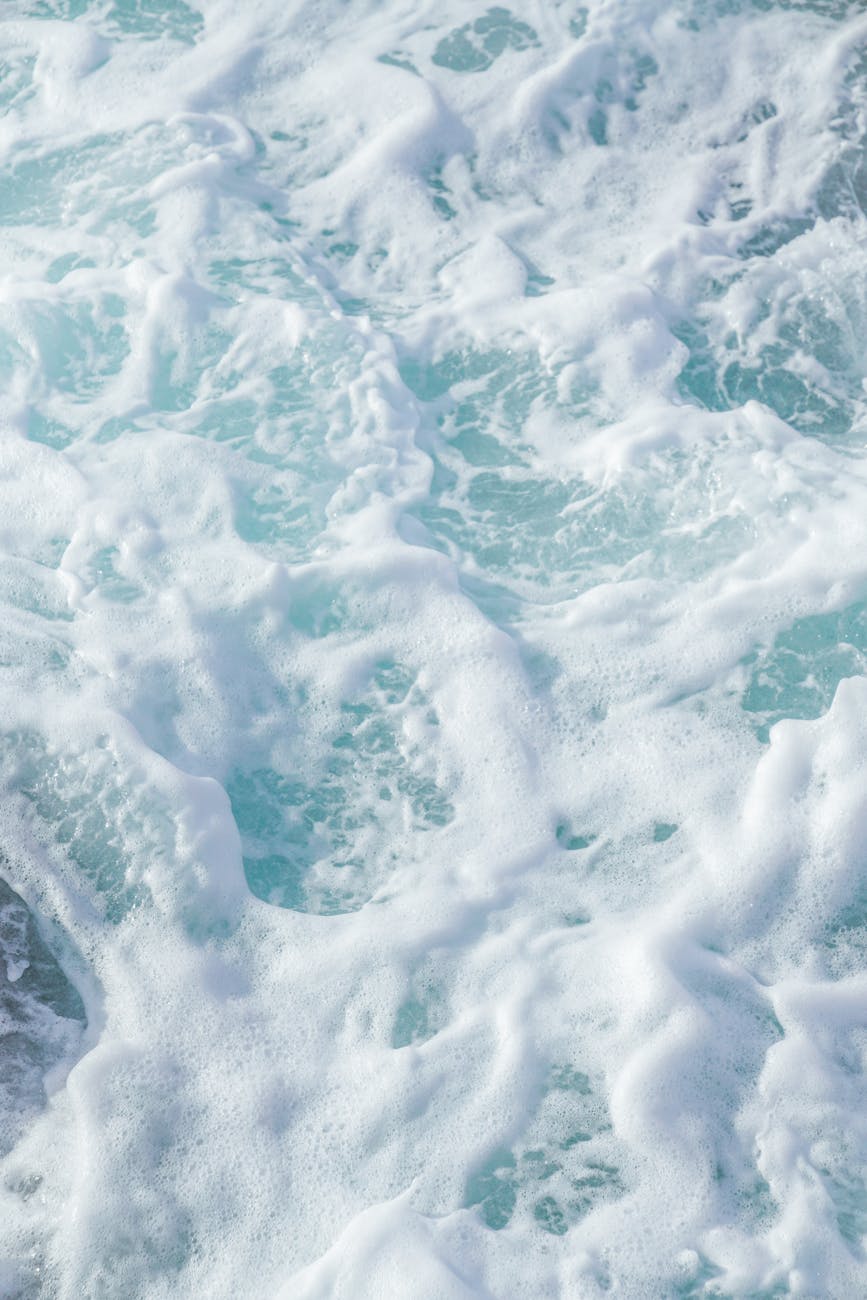Your cart is currently empty!
I learned the importance of monitoring TDS the hard way when my SPS corals started showing slow growth despite perfect lighting and flow. My refractometer showed proper salinity, but I’d been lazy about checking my RO/DI system’s TDS meter. Turns out my DI resin was spent—still producing crystal-clear water, but allowing acidic compounds to slip through. My tank’s pH had slowly dropped from 8.2 to 7.8 over several weeks.
Lower pH doesn’t just slow coral growth—it creates the perfect conditions for nuisance algae to outcompete your corals. I’ve always doubled my carbon filters to handle Austin’s chloramine, but I got complacent about the DI stage. That 3-4 TDS reading seemed “close enough” until I realized it was costing me coral health. Here’s everything I learned about keeping your water truly pure.
The Austin Chloramine Challenge
Austin Water uses chloramine year-round to disinfect its tap supply—unlike some cities that treat seasonally—meaning you can’t just let water sit to remove it like chlorine. According to the 2024 Austin Water Quality Report, the city maintains continuous chloramination for consistent disinfection throughout the distribution system.
Although Austin’s water quality meets or exceeds EPA and TCEQ standards, monthly reports show moderate conductivity (~408 µS/cm), which correlates to approximately 250-300 ppm TDS in tap water—enough dissolved minerals to disrupt salt mix formulations and tank balance. Additionally, the EWG database notes detectable disinfection byproducts like bromochloroacetic acid at low levels—these organics can fuel algae growth over time if not removed.
The good news? Austin has no lead pipes in the city system and non-detectable PFAS levels according to the 2024 report. But many hobbyists don’t realize how much chloramine, TDS, and trace organics are still present post-treatment. That’s why RO/DI filtration is essential for consistent reef success.
Regular tap water often contains chemicals and nutrients that can wreak havoc in a saltwater aquarium. An RO/DI system (Reverse Osmosis/Deionization) removes these impurities, providing 0 TDS (Total Dissolved Solids—think of it as a pollution meter for your water) that’s safe to mix into saltwater.
- Disinfectants: Chlorine or chloramine added by cities to sanitize water. Chloramine doesn’t evaporate and is toxic to fish and corals.
- Nutrients: Nitrate, phosphate, and silicates in tap water fuel nuisance algae blooms over time.
- Heavy metals & minerals: Copper, lead, or excess iron can accumulate and harm invertebrates.
Salt Mix Reality Check: Salt mix is formulated to be combined with pure 0 TDS water. If you use tap water that already has 200 ppm calcium, you could end up with 600 ppm calcium in your tank—far above ideal levels!
Why 0 TDS Actually Matters (Beyond Just ‘Pure Water’)
Many beginners think 5-10 TDS is “close enough,” especially for fish-only systems where it might be fine. But reef tanks with corals are different. When DI resin gets spent, it’s not just letting random minerals through—it’s often letting acidic compounds pass that can slowly lower your pH.
I discovered this when my normally stable 8.2 pH gradually dropped to 7.8 over a month. At lower pH, corals struggle to build their skeletons, growth slows, and algae gets a competitive advantage. What looked like a “minor” 5~ TDS reading was actually creating a slow-motion reef crash.
Now I’m religious about changing DI resin the moment I see anything above 3 TDS. For coral systems, that extra precision matters—for fish-only tanks, you have more wiggle room.
Setting Up a 5-Stage RO/DI System
Most beginners start with a 4–5 stage RO/DI unit, which is sufficient for typical city water. A 5-stage RO/DI generally consists of: a sediment pre-filter, two carbon block filters, the RO membrane, and a final DI resin cartridge. However, if you’re in an area using chloramines a 5-stage with 2 carbon block filters is required. Many opt for a 7 stage for better efficiency and longevity.
Sediment and Carbon Pre-Filters
Water first enters a sediment filter (often a pleated polypropylene cartridge) that removes rust, sand, and fine particles. I use a 1-micron sediment filter instead of a looser 5-micron to trap more fine debris and protect the carbon blocks from clogging prematurely.
Next, one or two carbon block filters remove chlorine, chloramine, and organic chemicals. For chloramine-treated water like Austin’s, it’s critical to use catalytic carbon blocks with a tight pore size (1 micron). I upgraded my second and third stages to BRS 1-micron carbon blocks specifically designed for chloramine removal.
Pro Tip: Running two carbon block stages in series gives extra contact time to fully neutralize chloramine before water reaches the RO membrane. This protects your expensive membrane from chloramine damage.
RO Membrane and DI Resin
After the pre-filters, water is forced through the RO membrane—a semi-permeable membrane that removes ~98% of dissolved solids. The RO stage dramatically lowers TDS, but a small amount of impurities still trickle through.
That’s where the DI (deionization) resin comes in. The DI stage uses mixed-bed resin beads that chemically bind the remaining ions, delivering true 0 TDS water. A dual TDS meter measuring before and after the DI stage is the most important upgrade you can make—it tells you exactly when to change filters.
Efficient Water Storage Using Brute Trash Cans
One of the most popular storage solutions is food-grade plastic trash cans like Rubbermaid Brute containers. These come in sizes from 20 gallons up to 44+ gallons. I use a 50-gallon Brute with wheels paired with pump + water hose —makes water changes so much easier than hauling buckets.
Auto Shut-Off with Float Valve
Install a simple float valve in your RO/DI reservoir to automatically stop the flow when the container fills. This prevents overflows—learned this lesson after flooding my garage floor because I forgot I was making water! The float valve connects to your RO/DI’s auto-shutoff valve, so when the float closes, the waste water line shuts off too.
Many reefers prefer two Brute cans: one for fresh RO/DI water and one for mixed saltwater. I keep 20–30 gallons of pure RO/DI on hand for top-offs and a separate batch of ready-to-use saltwater for water changes.
Mixing Your Saltwater Like a Pro
Never use straight tap water for mixing salt—you’ve gone through the effort of filtering for good reason. Here’s my step-by-step process that ensures consistent results:
The Mixing Process
- Fill container with RO/DI water first – Never add salt to a partially filled container. Always start with the full volume you intend to mix.
- Turn on powerhead – Drop in a submersible pump (300-800 GPH works great). I use a Sicce Syncra 2.0 that moves things around nicely.
- Add salt gradually – Pour salt slowly while the pump runs. I use about 2.5 cups per 5 gallons to hit 35 ppt, but always verify with a refractometer.
- Let it mix and test – Give it time to fully dissolve and clear up, then check salinity with a refractometer. Natural seawater is about 35 ppt (specific gravity ~1.0264).
Temperature Matters: For immediate water changes, match the new saltwater temperature to your tank (typically 77-78°F). I drop an aquarium heater right in the Brute can to bring it up to temp.
Salt Mix Selection
Any reputable salt mix (Instant Ocean, Reef Crystals, Red Sea (Red/Blue), Tropic Marin) can grow healthy reefs. The key is consistency—pick one brand and stick with it rather than switching frequently. Different salts have slightly different calcium, alkalinity, and trace element levels. I use Red Sea Red Bucket for its elevated dKH that suites my water change schedule.
The Smart Water Change System
One of the biggest hassles of water changes is lugging buckets back and forth. Since I already have a decent pump in my mixing station, I take it a step further: pump the new water directly to my display tank using a Wi-Fi smart plug and marine-grade hose.
I use a strong pump (800 GPH) with a 25-foot food-grade hose to send water from my garage mixing station straight to my living room tank. A smart plug lets me control the pump remotely from my phone while I’m watching the tank fill. What used to be a 30-minute bucket brigade is now a 5-minute push-button job.
Safety First: Never walk away from a running fill pump. Smart setups aren’t foolproof—if your internet drops or the smart plug fails, the pump could overfill your tank. Always have manual control as backup.
Essential Equipment List
🧪 RO/DI System Components
- LiquaGen 5-Stage RO/DI System – Basic, budget-friendly starter setup. Add your own TDS meter and pressure gauge.
- BRS Universal Carbon Blocks (1 Micron) – Specifically designed for chloramine. Use two in a row for maximum contact time.
- 1 Micron Poly Sediment Filter – Extends carbon filter and membrane life by catching fine particles.
🧂 Saltwater Mixing Station Gear
- Rubbermaid Brute Trash Cans (32/44 Gallon) – Food-safe, reef-safe. Available with dolly base for mobility.
- Float Valve Kit – Prevents overflows when filling water. Simple mechanical shutoff.
- High-Flow Mixing Pump (300–800 GPH) – For fast, even mixing in Brute container.
- Marine-Grade Hose – Drinking water safe, won’t leach chemicals. TastePURE RV hose works great.
- Wi-Fi Smart Plug (Optional) – Control water-change pump remotely. Use with caution!
Frequently Asked Questions
Do I really need RO/DI in Austin?
Yes, especially for coral systems. Austin’s chloramine doesn’t evaporate like chlorine, and our water has elevated TDS and phosphates. I’ve tested local tap water at 280+ TDS with detectable phosphates—that’s algae food going straight into your tank.
Can I just use Prime dechlorinator instead?
Prime works for emergency situations, but it doesn’t remove TDS, phosphates, or other dissolved minerals. For long-term reef success, filtered water is essential. Think of Prime as a band-aid, RO/DI as the cure.
How much does it cost to run an RO/DI system?
After the initial setup ($200-400), ongoing costs are minimal. DI resin replacement runs about $20-30 every few months, carbon blocks $15-20 each annually. Compare that to buying RO water at $0.35/gallon—the system pays for itself in 6-12 months.
Key Takeaways
- Always use RO/DI water – Tap water isn’t worth the risk, especially in chloramine-treated areas like Austin
- Monitor TDS religiously – Change DI resin at 1+ TDS for coral systems. Spent resin can cause pH problems.
- Double up on carbon for chloramine – Two 1-micron carbon blocks in series provide adequate contact time
- Mix saltwater properly – Full container of RO/DI first, powerhead running, add salt slowly, verify salinity
- Invest in storage and automation – Brute cans with float valves make water management stress-free
- Consistency over perfection – Pick one salt brand and stick with it. Stability matters more than chasing numbers.
Water quality is the foundation of a healthy reef. By investing time upfront in your RO/DI setup and mixing routine, you’ll avoid the most common disasters that drive beginners out of the hobby. Take it slow, monitor your TDS, and never hesitate to ask for help if you’re unsure.
Coming up next: Our complete Budget Reef Setup Under $1,000 guide—because great water deserves an equally great tank setup!
Questions about your specific water situation? Drop a comment below with your city and water report details—I’ll help you dial in the right setup for your area.


Leave a Reply